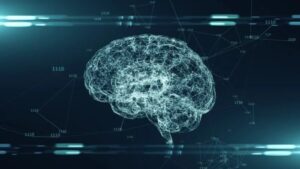
AI in education statistics sets the stage for this enthralling narrative, offering readers a glimpse into a story that is rich in detail. The integration of artificial intelligence in educational settings is not just a trend; it’s a transformative force that is reshaping how students learn and teachers teach. With the rise of innovative AI tools, educational institutions are experiencing a shift in methodologies that enhances student engagement and learning outcomes.
Current statistics reveal an increasing adoption of AI technologies in classrooms worldwide, highlighting the growing recognition of their potential to revolutionize education. Over the past decade, educational institutions have progressively embraced AI, leading to fascinating trends that illustrate its impact on teaching and learning processes. This engaging exploration provides insights into the effectiveness of these tools, their benefits, challenges, and successful case studies that demonstrate their practical applications.
Understanding AI Impact on Education

The integration of artificial intelligence (AI) in education has gained significant traction in recent years, profoundly influencing how institutions operate and how students learn. This technology has evolved from theoretical discussions to practical applications, creating new paradigms in educational settings worldwide.Statistics show that the global AI market in education is expected to reach over $20 billion by 2027, with a compound annual growth rate (CAGR) of 40%.
A survey conducted by HolonIQ revealed that approximately 50% of educational institutions have implemented some form of AI technology in their operations. Notably, AI is being used for personalized learning experiences, automating administrative tasks, and providing data-driven insights for both educators and students. The trends indicate a considerable shift towards adopting AI as a core component of educational strategies, particularly in higher education and K-12 settings.
Current Statistics on AI Use in Education
AI’s incorporation into classrooms is reflected in various statistics that highlight its prevalence and versatility. For instance, the use of AI-driven tools for personalized learning has improved student engagement and achievement by tailoring educational content to individual learning paces and styles.
- Reports indicate that 47% of educators believe AI can enhance student outcomes.
- In the last decade, 67% of institutions have adopted AI-powered tutoring systems, enabling real-time feedback and support for students.
- AI is transforming administrative processes, with 30% of institutions automating tasks such as grading and attendance tracking, allowing educators to focus more on teaching.
Trends in AI Adoption in Educational Institutions
Over the past decade, there has been a marked increase in the adoption of AI technologies within educational institutions. This trend is propelled by advancements in machine learning, data analytics, and natural language processing, enabling more sophisticated educational tools.The following trends illustrate this significant shift:
- The emergence of AI-based learning management systems (LMS) that provide analytics on student performance.
- Growth in the use of chatbots for student support services, enhancing communication and accessibility.
- Increased investment in AI research and development by educational institutions, with a focus on improving learning outcomes and operational efficiency.
Reshaping Teaching Methodologies and Student Engagement
AI technologies are not just tools; they are fundamentally reshaping teaching methodologies and enhancing student engagement. With capabilities such as adaptive learning and predictive analytics, educators can better meet the diverse needs of their students.The impact of AI on teaching and learning can be summarized in the following ways:
- Adaptive learning platforms adjust content and assessments based on individual student performance, fostering a more personalized learning journey.
- AI-driven analytics help educators identify at-risk students through data patterns, allowing for timely interventions.
- Gamification and AI-based simulations are increasing student motivation and participation, transforming traditional learning into interactive experiences.
“AI is redefining the educational landscape by making learning more personalized and efficient.”
AI Tools and Their Effectiveness in Learning
Artificial Intelligence (AI) is increasingly reshaping the educational landscape, providing innovative tools that enhance learning experiences. Various AI-powered applications are being integrated into classrooms, facilitating personalized learning, automating administrative tasks, and even providing real-time feedback to students. The effectiveness of these tools is under constant evaluation as educators explore how they can be best utilized to maximize student outcomes.
Popular AI Tools Used in Education
Several AI tools have gained popularity in educational settings, each serving unique purposes and functionalities. Understanding their applications helps in recognizing their effectiveness in improving learning outcomes. Here are some notable AI tools and their usage statistics:
- Khan Academy: Utilizing AI-driven systems to tailor educational content, Khan Academy reported that personalized learning pathways have increased student engagement by over 20%.
- Duolingo: This language-learning app incorporates AI to adapt lessons based on user performance, with statistics showing that learners increase their vocabulary by an average of 60% in just three months.
- Grammarly: An AI writing assistant that provides real-time feedback on grammar and style, helping students enhance their writing skills. Users reported a 50% improvement in writing clarity.
- Smart Sparrow: This adaptive learning platform allows educators to create personalized learning experiences, with studies indicating a 35% increase in student retention rates.
Perceived Benefits and Challenges of AI Tools in Classrooms
The integration of AI tools brings a myriad of benefits as well as challenges that educators must navigate. Understanding these aspects is crucial for successful implementation.
- Benefits:
-
Enhanced Personalization:
AI tools can adapt to individual learning styles, providing customized resources that meet students’ needs.
-
Efficiency in Administrative Tasks:
Automation of grading and administrative duties allows teachers to focus more on teaching and student interaction.
-
Data-Driven Insights:
AI can analyze vast amounts of data to provide insights into student performance and learning trends.
-
- Challenges:
-
Equity of Access:
Not all students have equal access to technology, potentially widening the achievement gap.
-
Dependence on Technology:
Over-reliance on AI tools may hinder the development of critical thinking and problem-solving skills.
-
Data Privacy Concerns:
The use of AI often involves collecting personal data, raising concerns about student privacy and security.
-
Successful AI Integrations in Educational Programs
Real-life examples of successful AI implementations in education highlight the potential of these technologies. Notable case studies demonstrate the tangible benefits experienced by both institutions and students.
- Carnegie Learning: Utilizing AI algorithms, this math education program adjusts the difficulty of questions in real-time, leading to a 25% improvement in student math scores across multiple studies.
- Georgia Tech’s Jill Watson: An AI teaching assistant that supports students in online courses, which reduced instructor workload by 30% and improved student satisfaction ratings significantly.
- IBM Watson Education: This program uses AI to analyze student performance data and provide tailored recommendations for learning resources, resulting in a 15% increase in student test scores.
Future Prospects of AI in Education
The upcoming landscape of education is poised to experience significant transformation through the integration of artificial intelligence. As we look to the next five years, various AI technologies are expected to play a pivotal role in reshaping how knowledge is imparted and absorbed. These developments will not only enhance learning experiences but also influence educational policies and practices to better align with technological advancements.
Upcoming AI Technologies in Education
The educational sector is on the brink of incorporating innovative AI technologies that promise to revolutionize the way students learn and interact with course materials. Key technologies include:
- Adaptive Learning Platforms: These systems utilize algorithms to tailor educational content to the individual needs of students, adjusting in real-time based on their performance and learning pace. Such platforms can significantly enhance student engagement and information retention.
- Virtual Reality (VR) and Augmented Reality (AR): By integrating AI with VR and AR, immersive learning experiences can be created that allow students to explore complex concepts in a visually rich environment. For instance, medical students can practice surgeries in a simulated setting, enhancing their practical skills.
- Intelligent Tutoring Systems: AI-driven tutors can provide personalized assistance, offering explanations, feedback, and resources tailored to each student’s learning style. This can be particularly beneficial for learners who require extra support or have distinct learning preferences.
- Data Analytics for Student Performance: AI can analyze vast amounts of data to identify trends in student performance, helping educators implement targeted interventions to improve academic outcomes. This can lead to a more proactive approach to addressing learning challenges.
Changes in Educational Policies
As AI technologies become more integrated into educational systems, corresponding changes in educational policies will be essential to accommodate these advancements. Policymakers will need to consider:
- Curriculum Integration: Educational institutions will need to update curricula to include AI literacy, ensuring students are equipped with the necessary skills to navigate and utilize AI technologies effectively.
- Data Privacy Regulations: With AI systems collecting and analyzing student data, robust privacy policies will be critical to safeguard personal information while promoting transparency in data usage.
- Funding for AI Resources: Increased investment in AI tools and training for educators will be necessary to ensure that schools can effectively implement and maintain these technologies for enhanced learning experiences.
- Equity in Access: Policies must be established to address disparities in access to AI resources among different demographic groups, ensuring all students benefit from advancements in technology.
Transforming the Learning Experience for Diverse Learner Groups
AI has the potential to create a more inclusive educational environment that meets the varied needs of diverse learner groups. For example, students with learning disabilities can benefit from customized learning plans that adapt to their unique challenges. AI tools can provide real-time feedback, allowing for immediate adjustment and support. Moreover, multilingual AI applications can assist non-native speakers by offering translations and tailored content that reflect their language proficiency levels.
This enables these learners to engage more effectively with the material.A practical example is the use of AI chatbots that can facilitate communication and provide resources in multiple languages, enhancing accessibility. In addition, AI systems can identify at-risk students early on, allowing educators to implement interventions before challenges escalate.Overall, the future of AI in education not only holds promise for technological advancements but also emphasizes the importance of fostering an equitable and effective learning environment for all students.
Closing Summary

In summary, the future of AI in education promises exciting possibilities that could redefine the learning experience for diverse groups. As we look ahead, upcoming AI technologies are poised to shape educational policies and practices, paving the way for a more inclusive and effective learning environment. By understanding and discussing these trends, we gain valuable perspectives on how AI can be a powerful ally in education, ensuring that all learners can thrive in an increasingly digital world.
General Inquiries
What are the main benefits of AI in education?
AI enhances personalized learning, automates administrative tasks, improves student engagement, and provides data-driven insights to educators.
How can AI tools address diverse learning needs?
AI tools can adapt content and teaching methods to cater to individual learning styles, ensuring that each student receives the support they need.
What challenges do schools face when implementing AI?
Challenges include the high cost of AI technologies, the need for training educators, and concerns over data privacy and security.
How does AI impact student-teacher interactions?
AI can enhance interactions by providing teachers with insights about student performance, allowing for more targeted assistance while enabling students to learn at their own pace.
What is the future outlook for AI in education?
The future of AI in education looks promising, with advancements expected to further personalize and enhance learning experiences, making education more accessible and effective.




